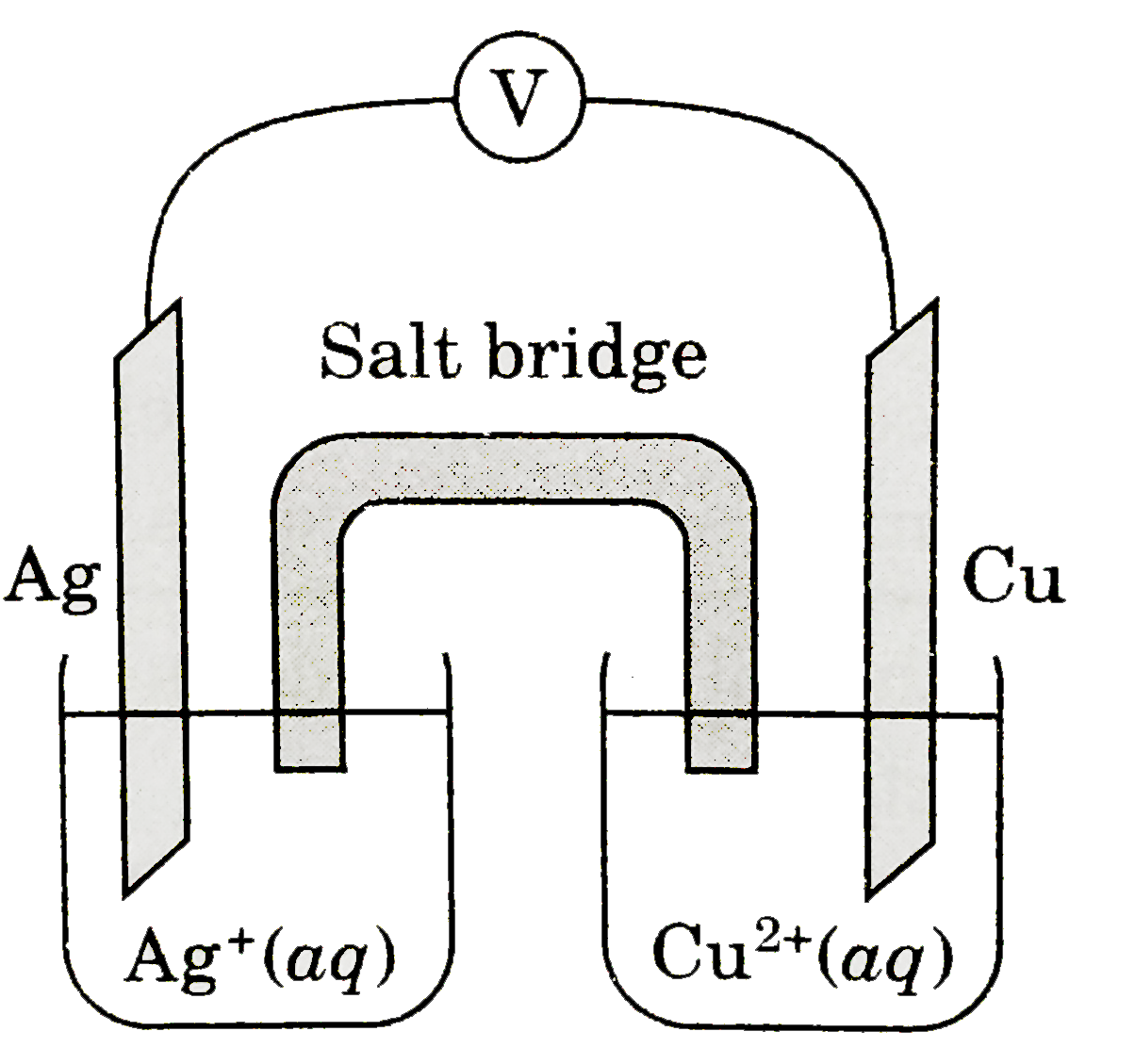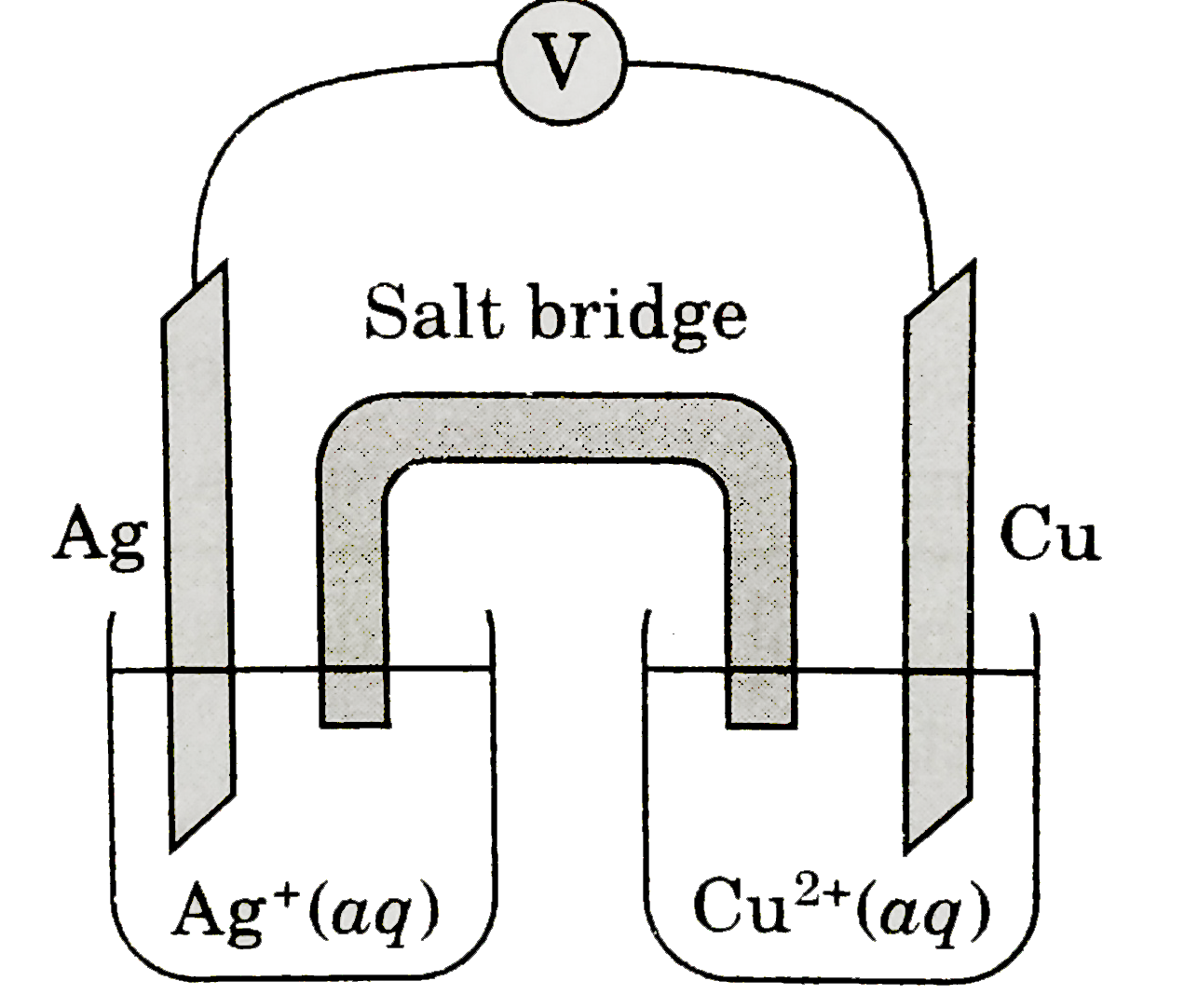Al3+(aq)+3e−→Al(s) E∘=−1.66V
Cu2+(aq)+2e−→Cu(s) E∘=+0.34V
What voltage is produced under standard conditions by combining the half-reactions witih these standard Electrode Potential?
1.32V
2.00V
2.30V
4.34V
The correct Answer is:B
Step by step video, text & image solution for Al^(3+)(aq) + 3e^(-) rightarrow Al(s) E^(@) = -1.66V Cu^(2+)(aq) + 2e^(-) rightarrow Cu(s) E^(@) = +0.34V What voltage is produced under standard conditions by combining the half-reactions witih these standard Electrode Potential? by Chemistry experts to help you in doubts & scoring excellent marks in Class 12 exams.
Updated on:21/07/2023Topper's Solved these Questions
- ELECTROCHEMISTYBook:GRB PUBLICATIONChapter:ELECTROCHEMISTYExercise:Latimer Diagram, concentration cells
Explore 117 Videos
- ELECTROCHEMISTYBook:GRB PUBLICATIONChapter:ELECTROCHEMISTYExercise:Batteries
Explore 10 Videos
- ELECTROCHEMISTYBook:GRB PUBLICATIONChapter:ELECTROCHEMISTYExercise:Subjective type
Explore 39 Videos
- D-BLOCK ELEMENTSBook:GRB PUBLICATIONChapter:D-BLOCK ELEMENTSExercise:Subjective Type
Explore 18 Videos
- ENVIRONMENTAL CHEMISTRY Book:GRB PUBLICATIONChapter:ENVIRONMENTAL CHEMISTRY Exercise:Straight objective type
Explore 40 Videos
Similar Questions
A13++3e−→Al(s), E∘=−1.66V
Cu2++2e−→CU(s), E∘=+0.34V
What voltage is produced under standard conditions by combining the half reactions with these standard electrode potentials?
View SolutionFollowing reactions occur at cathode during the electrolysis of aqueous copper (II) chloride solution:
CU2+(aq)+2e−→Cus, E∘=+0.34V
H+(aq)+e−→12H2(s), E∘=0.00V
On the basis of their standard reduction electrode potential (E∘) values, which reaction is feasible at the cathode and why?
View Solution
Knowledge Check
Au3++3−→Au(s) E∘=1.50V
Cu2++2e−→Cu(s) E∘=0.34V
According to the standard reduction potentials above, a substance that can oxidize only one of these metals must have an E∘ value:Aless than 0.34VBbetween 0.34 and 0.80 VCbetween 0.80 and 1.50VDgreater than 1.50VAl3+(aq)+3e−→Al(s)E∘=−1.66V
Mn2+(aq)+2e−→Mn(s)E∘=−1.18V
What is the standard potential of a volaic cell produced by using these two half-reactions?A0.04VB0.48VC2.84VD6.68VAg+(aq)+e−→Ag(s) E∘=0.80V
Co2+(aq)+2e(−)→Co(s) E∘=−0.28V
Use the standard reduction potentials to determine the standard potential for the reaction:
Co(s)+2Ag+(aq□)→Co2+(aq)+2Ag(s)A0.52VB0.66VC1.08VD1.88V
Al3+(aq)+3e−→Al(s)E∘=−1.66V
Mn2+(aq)+2e−→Mn(s)E∘=−1.18V
What process occurs at the anode of a volatic cell utilizing these two half-reactions?
View SolutionSn4+(aq)+2e−→Sn2+(aq) E∘=0.15V
Cr3+(aq)+e−→Cr2+(aq) E∘=0.41V
According to the standard reduction potentials above, what is the value of E∘ for the reaction below?
2Cr3+(aq)+Sn2+(aq)→2Cr2+(aq)+Sn4+(aq)
View SolutionAg+(aq)+e−→Ag(s)E∘=0.80V
Cu2+(aq)+2e−→Cu(s)E∘=0.34V

Which increases immediately if the surface area of the silver electrode is increased?
View SolutionAg+(aq)+e−→Ag(s)E∘=0.80V
Cu2+(aq)+2e−→Cu(s)E∘=0.34V

Which expression gives the voltage for this cell if [Cu2+]=1.00M and [Ag+]=0.010M?
View SolutionCu++e−→Cu, E∘=x1vo<,
Cu2++2e−→Cu, E∘=x2 volt, then for
Cu2++e−→Cu+,E∘ (volt) will be :
View Solution

